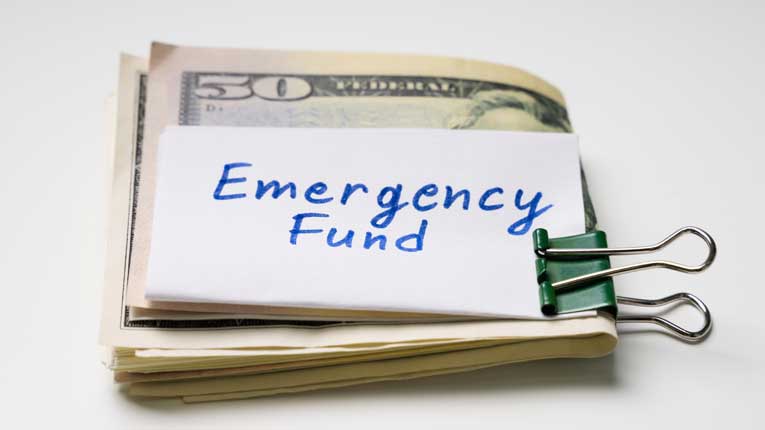In today’s unpredictable world, financial stability is more essential than ever. Whether it’s a sudden job loss, an unexpected medical emergency, or a car breakdown, life has a way of throwing curveballs when we least expect them.
Having an emergency fund in place is one of the smartest financial decisions you can make to ensure you’re prepared for life’s uncertainties. In this comprehensive guide, we’ll discuss the importance of an emergency fund, how much you should save, and step-by-step instructions on how to start building one.
What is an Emergency Fund?
An emergency fund is a savings reserve set aside to cover unforeseen financial emergencies, such as medical expenses, urgent home repairs, or losing your job. Unlike other savings goals such as vacations or purchasing a new car, the purpose of an emergency fund is to provide a financial cushion that keeps you from going into debt when life throws unexpected expenses your way. Having access to this fund allows you to maintain your financial stability during stressful times.
Why is an Emergency Fund So Important?
While it may seem tempting to rely on credit cards or loans when faced with an emergency, relying on debt can often lead to long-term financial struggles. Here are several reasons why having an emergency fund is crucial:
1. Protection from Unexpected Expenses
Emergencies don’t schedule themselves, which means you need to be ready for them at all times. From car repairs to medical bills, life’s unpredictable nature requires financial preparedness. An emergency fund helps to cover these expenses without causing significant disruption to your finances.
2. Avoiding High-Interest Debt
When you don’t have an emergency fund, your first instinct may be to reach for a credit card or take out a loan. While this can provide short-term relief, it often leads to high-interest debt that can be difficult to pay off. An emergency fund eliminates the need for borrowing and helps you avoid the long-term financial burden of debt.
3. Peace of Mind
Knowing that you have a financial cushion in place can provide a sense of relief, reducing stress in times of crisis. It allows you to face emergencies without having to worry about how to pay for them or whether you’ll be able to cover your basic needs. This peace of mind is invaluable in maintaining both your financial and emotional well-being.
4. Job Security and Career Flexibility
An emergency fund provides a safety net if you unexpectedly lose your job or experience a dip in income. It gives you the flexibility to pursue career opportunities that align with your long-term goals, without feeling pressured to stay in a job for financial reasons.
5. Financial Independence
Building an emergency fund is one of the first steps towards achieving financial independence. It allows you to have control over your financial situation, reducing the need to rely on external sources of help like family members or loans. It also helps in maintaining your financial goals and priorities.
How Much Should You Save in Your Emergency Fund?
The amount you should save in your emergency fund depends on various factors, such as your monthly expenses, lifestyle, and the stability of your income. However, a general rule of thumb is to save between three to six months’ worth of living expenses. This amount should cover your essential costs, such as rent or mortgage payments, utilities, groceries, transportation, and insurance premiums.
If you have a more unstable income or depend on seasonal work, it may be beneficial to aim for a larger emergency fund—perhaps six to twelve months’ worth of expenses. On the other hand, if you have a stable job and minimal living expenses, a three-month emergency fund may suffice.
Where Should You Keep Your Emergency Fund?
It’s essential to store your emergency fund in a liquid, easily accessible account. The goal is to have immediate access to the money when an emergency strikes without delays or penalties. Here are some options to consider:
1. High-Yield Savings Accounts
A high-yield savings account is one of the best places to store your emergency fund. These accounts offer higher interest rates than traditional savings accounts, allowing your money to grow over time. Many online banks offer high-yield accounts with competitive rates and minimal fees, making them a great option for your emergency savings.
2. Money Market Accounts
Money market accounts are another safe and liquid option. They typically offer slightly higher interest rates than savings accounts, and while access to funds may be limited in certain circumstances, they still provide easy access when needed.
3. Certificates of Deposit (CDs)
If you want your emergency fund to grow faster, a certificate of deposit (CD) could be an option. However, unlike savings accounts, you must agree to keep the money in the CD for a set period. If you withdraw funds early, you may face penalties. For this reason, CDs are generally better for long-term savings goals rather than emergency funds.
4. Traditional Savings Accounts
A traditional savings account is always an option, especially if you’re just starting to save. While the interest rates may be low, the benefit of easy access to funds when needed makes it a safe option for an emergency fund.
How to Start Building Your Emergency Fund
Starting an emergency fund can seem like a daunting task, but with the right approach, it can be an achievable goal. Here are some actionable steps to help you get started:
1. Set a Realistic Goal
Before you can start saving, you need to set a target. Start by calculating your monthly expenses and determine how much you’d need to save for three to six months of expenses. If this seems like too much to handle right away, break it down into smaller, more manageable goals. Start with one month of expenses, and then gradually build your fund from there.
2. Create a Budget
To free up money for your emergency fund, create a budget that prioritizes savings. Identify areas where you can cut back on unnecessary spending—like eating out, subscription services, or impulse purchases—and allocate that money to your emergency fund.
3. Automate Your Savings
Setting up automatic transfers from your checking account to your savings account is one of the easiest ways to ensure you’re consistently contributing to your emergency fund. You can start by setting aside a small, manageable amount and gradually increase it as you become more comfortable with saving.
4. Save Windfalls
Whenever you receive unexpected income—such as a tax refund, bonus, or gift—consider putting a portion of it into your emergency fund. This is an easy way to quickly build your savings without having to alter your regular budget.
5. Cut Back on Unnecessary Spending
While building an emergency fund, it’s important to temporarily scale back on non-essential expenses. This might mean limiting discretionary spending like shopping, dining out, or entertainment. Every dollar saved can go toward building your financial safety net.
6. Monitor Your Progress
Track your progress regularly to stay motivated. Celebrate small milestones along the way, such as reaching 25% or 50% of your savings goal. Tracking your progress will keep you focused and give you a sense of accomplishment as you work toward your goal.
Common Mistakes to Avoid When Building Your Emergency Fund
Building an emergency fund is a great financial goal, but it’s easy to make mistakes along the way. Here are some common errors to avoid:
1. Underestimating Your Expenses
Be sure to account for all of your regular expenses, including those that may be seasonal or less frequent (e.g., annual insurance premiums). This will ensure that your emergency fund is truly sufficient.
2. Dipping Into Your Emergency Fund for Non-Emergencies
It’s tempting to use your emergency fund for non-urgent expenses, such as a vacation or home renovations. However, it’s essential to resist this temptation and use the fund only for true emergencies.
3. Saving Too Little or Too Much
While it’s important to save a sufficient amount, you also need to be realistic about what’s achievable. Saving too little may leave you unprepared, while saving too much may leave you financially stressed in other areas of life.
Conclusion
An emergency fund is a cornerstone of financial security. It provides protection from unforeseen expenses, prevents you from accumulating debt, and gives you peace of mind knowing that you can handle life’s curveballs. By starting small and consistently saving, you can build an emergency fund that will give you the confidence to face whatever comes your way. Remember, the key to success is to start now and build gradually. Your future self will thank you for it.
By following the steps outlined in this article, you can take the first step toward achieving financial security and peace of mind. The road to a fully funded emergency fund may take time, but the benefits of having one in place will be well worth the effort.

